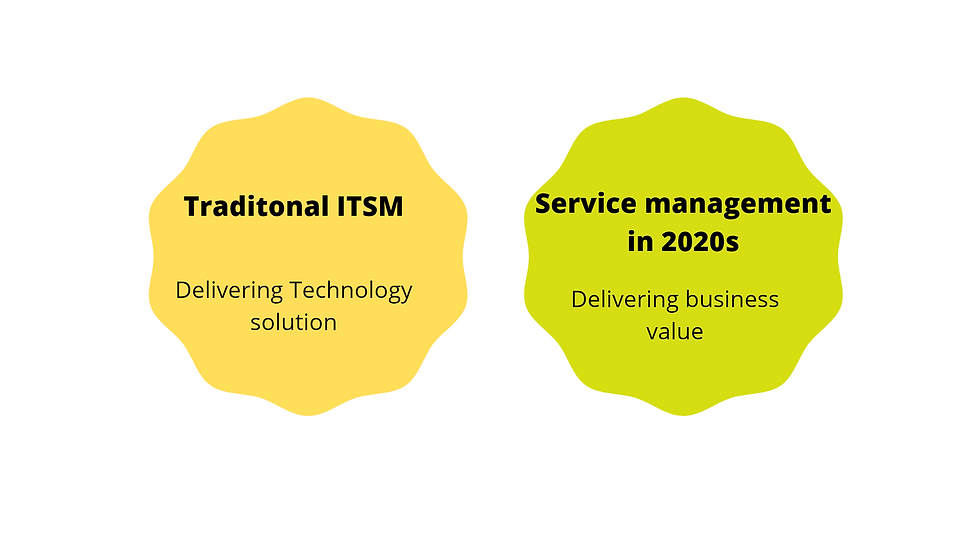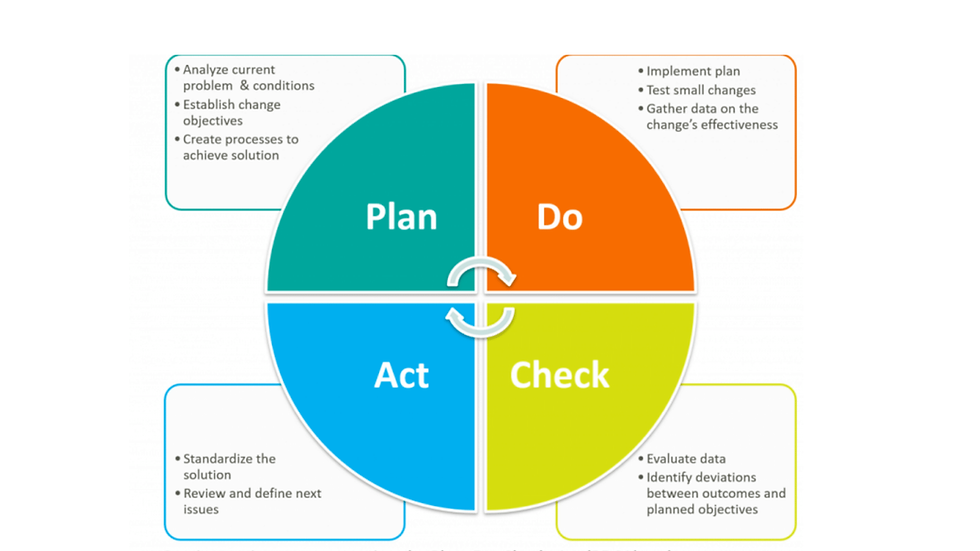
ITIL® 4 is the most recent version. ITIL 4 is a digital operating model that allows businesses to co-create meaningful value from IT-supported products and services.
ITIL 4 builds on ITIL's decades of development, expanding existing IT Service Management techniques to include customer experience, value streams, and digital transformation. ITIL 4
ITIL assists enterprises in service management success.
Organizational success is primarily determined by an organization's ability to deliver its products and services to the market in a way that:
Beats competitor offerings
Aligns with legal and regulatory requirements
Meets customer expectations
Companies must move quicker today, in the 2022s, to keep up with the ever-changing needs of consumers. This is especially true in the age of social media, where user preferences and alternatives expand exponentially and change without warning.
For many businesses, digital transformation also means transitioning from a product to a digital service provider. The "Fourth Industrial Revolution" is defined by the world's digital revolution and the inevitable connection of humans, digital technologies, and physical assets.
How can your company keep up with technological advancements while still providing innovative, cost-effective products and services to fulfill your market's needs?
You can turn to ITIL.
What is ITIL?
ITIL is a widely recognized, industry-leading framework for IT service management (ITSM) and, increasingly, total service management that adds value to the business.

ITIL has provided thorough, practical, and proven guidance for developing an IT service management system for over 30 years, fostering consistency and continuous development for enterprises that use and supply IT-enabled services.
ITIL stood for Information Technology Infrastructure Library for many years, although the full name was finally dropped in favor of ITIL. Although ITIL is a foundation for ISO20000, there are some crucial variances.
Many firms have implemented ITIL, and there are millions of certified ITIL practitioners globally.
What’s new in ITIL 4?
ITIL 4 was released in winter 2019 and is now in its fourth edition. It provides the direction you need to meet new service management difficulties and leverage the power of current technology in an era of cloud, Agile, DevOps, and transformation.
The ITIL service value system (SVS) and the four dimensions model are significant components of the ITIL 4 framework.
The ITIL Service Value System
The ITIL service value system provides a flexible operational paradigm for service creation, delivery, and improvement. The following are the fundamental components of the ITIL SVS:
The ITIL practices
The ITIL guiding principles
Governance
Continual improvement
ITIL Four Dimensions
The Four Dimensions outlines a balanced, holistic, and successful approach to the ITIL SVS. The four dimensions are as follows:
Partners and Suppliers
Organizations and People
Value Streams and Processes
Information and Technology
These components represent a substantial advancement in ITIL over earlier versions. From a narrow focus on service delivery to a broader view of the value created by the products and services provided to customers. ITIL 4 is intended to facilitate a smooth transition from an organization's present ITIL investment and working style to a speedier, more flexible, and agile approach.
Who is Axelos? A brief history of ITIL
You can't get too far in ITIL without running into Axelos and asking who or what this is. Axelos own ITIL, but ITIL predates Axelos. Here's some background:
The UK government realized its rising reliance on technology in the late 1980s. The government enlisted the help of the Central Computer and Telecommunications Agency (CCTA) to develop process-oriented best practices to standardize IT administration.
The plan-do-check-act (PDCA) cycle was used in the initial version of ITIL.

ITIL v2 was released in 2000, and the next edition, ITIL 2007, a few years later.
Microsoft soon began adopting ITIL v2, using it as a base for the Microsoft Operations Framework.
In 2011, the next official update was released. ITIL v3 had five volumes: Service Strategy, Service Design, Service Transition, Service Operation, and Continual Service Improvement.
In 2013, a joint venture between the UK Government and Capita, a consulting firm, formed Axelos to develop better and manage its growing Global Best Practice Portfolio.
In February 2019, Axelos released ITIL 4, with a new focus on Agile and modern service delivery.
The most up-to-date ITIL information, particularly ITIL certification programs. Other best practice frameworks owned by Axelos include:
AgileSHIFT for enterprise agility
PRINCE2 for project management
Resilia for cybersecurity
And many more!
Who uses ITIL?
ITIL is used by large, medium, and small businesses worldwide to improve the value of their services. ITIL enables companies of all sizes and types to:
Implement new capabilities that directly provide business value
Solve business issues
Improve IT capability
ITIL 4 Benefits and Advantages
ITIL 4 has the following organizational benefits:
Smoother integration between evolving software delivery practices and the enterprise customer support framework
Reduced costs through improved use of resources
Faster and more flexible service delivery practices to support digital transformation
Better management of business risk and service disruption or failure
Improved service delivery and customer satisfaction
Better strategic alignment between IT and the business
Greater visibility of IT costs and assets
ITIL enhancement frameworks
ITIL is not the only framework that can be effective for overall company activities. While ITIL is the most frequently used and understood framework globally, some of the world's most successful firms use a combination of frameworks and best practices in addition to ITIL. This can be quite effective because each strategy adds something new. Other popular frameworks and concepts include:
Lean can be used to promote continuous improvement and waste removal. It works well with ITIL's continuous improvement.
COBIT is a well-known governance and compliance framework. In these areas, ITIL outperforms, and the two complement one other well.
Agile and DevOps work together to ensure that the IT department provides new business capabilities rapidly. They may clash with ITIL due to cultural variations among those who adopt them, but they can work effectively if the organization recognizes the value each brings.
Getting started with ITIL 4
Are you ready to dive into ITIL 4? You've come to the right place if you're new to ITIL or have some experience with it. ITIL 4 differs dramatically from its predecessors, so what you believe you know about ITIL and service management may be outdated.
ITIL certifications are available at several levels for anyone who desires to flourish in the field.
Professional consultants can help organizations that want (or need) implement ITIL techniques. Because implementing ITIL holistically is no easy task, trained ITIL experts can assist you in learning from the mistakes of others.
FAQ
What are the 5 ITIL v4 stages?
Between ITIL V3 and ITIL V4, what's the difference?
How long does one have to complete the ITIL 4 exam?



Comments